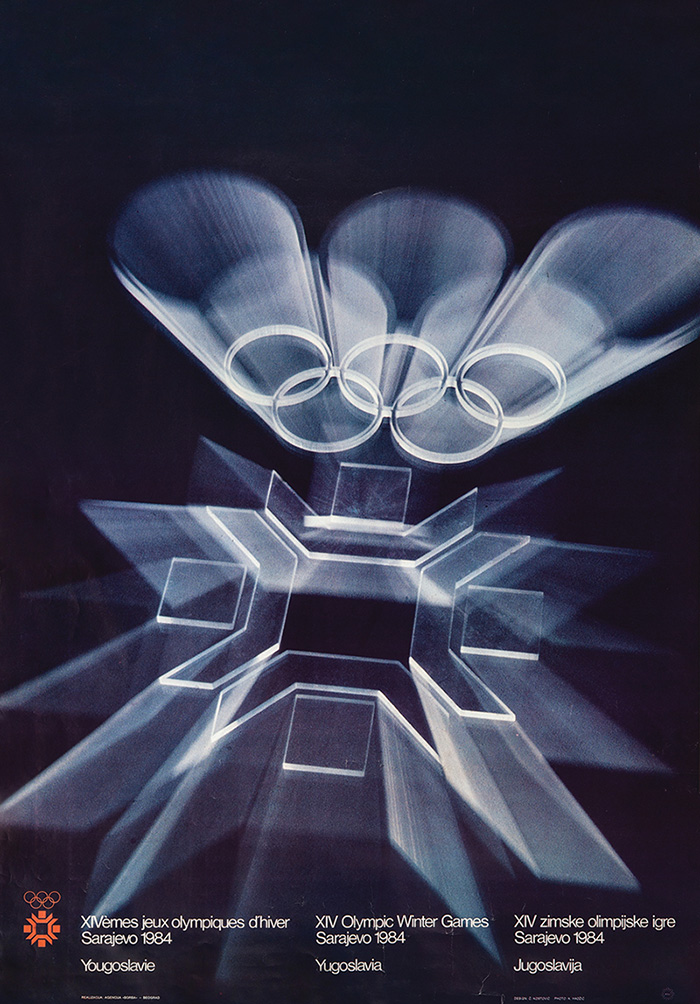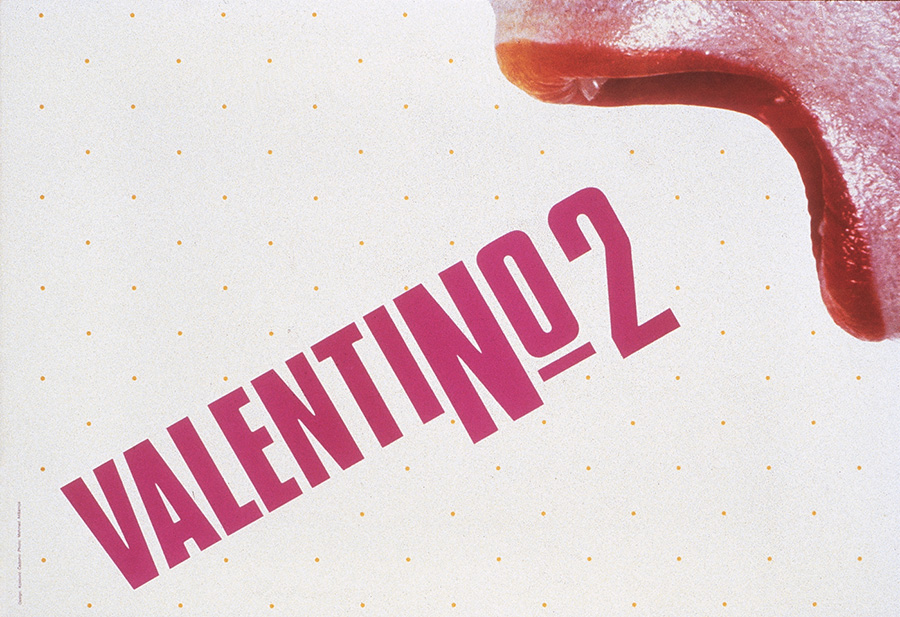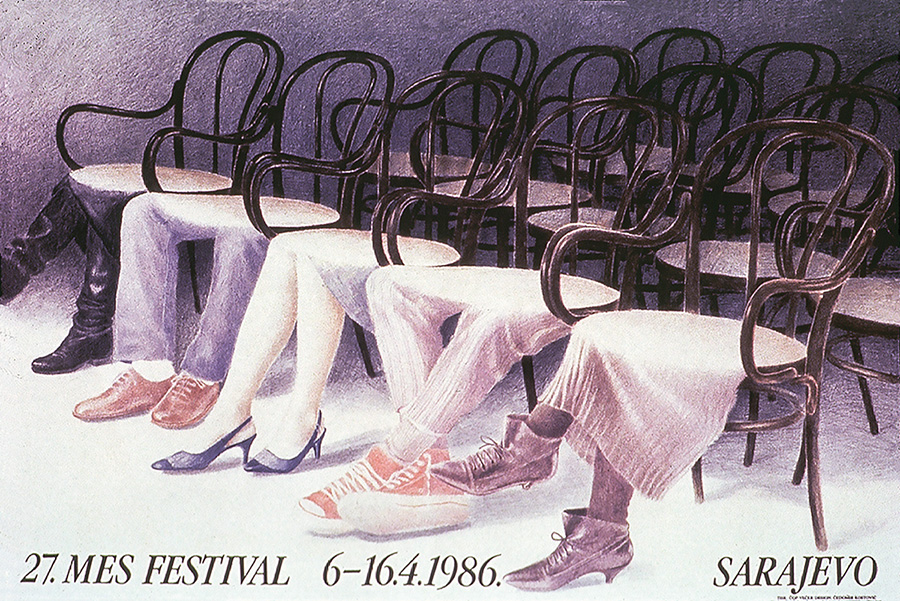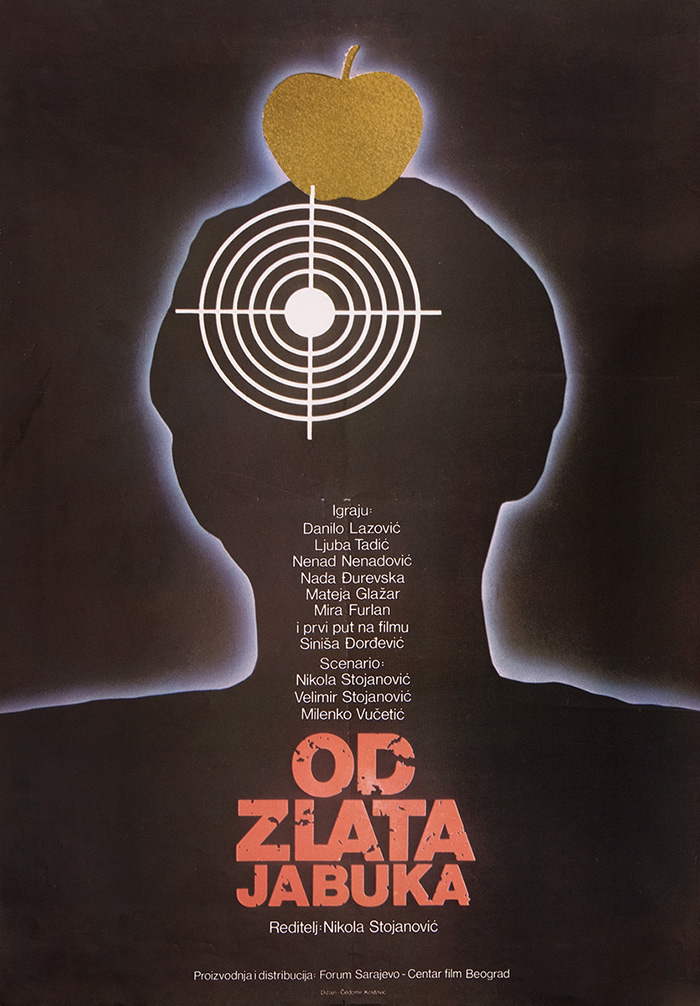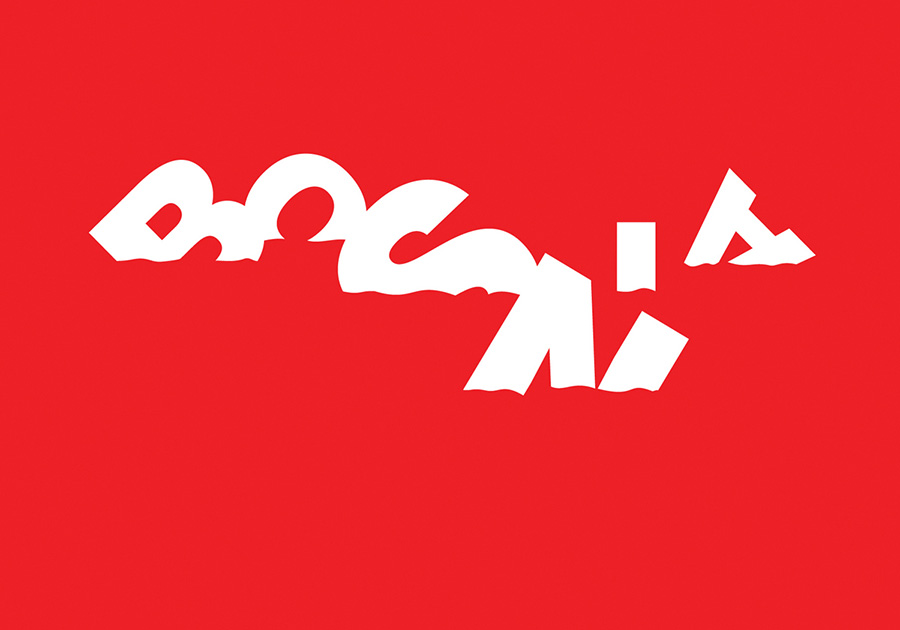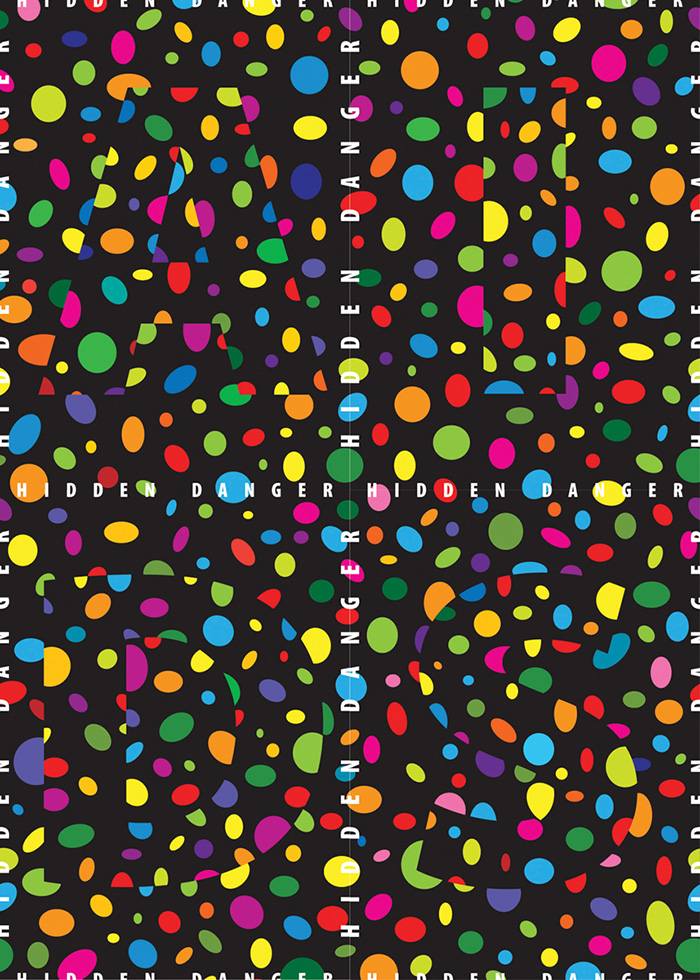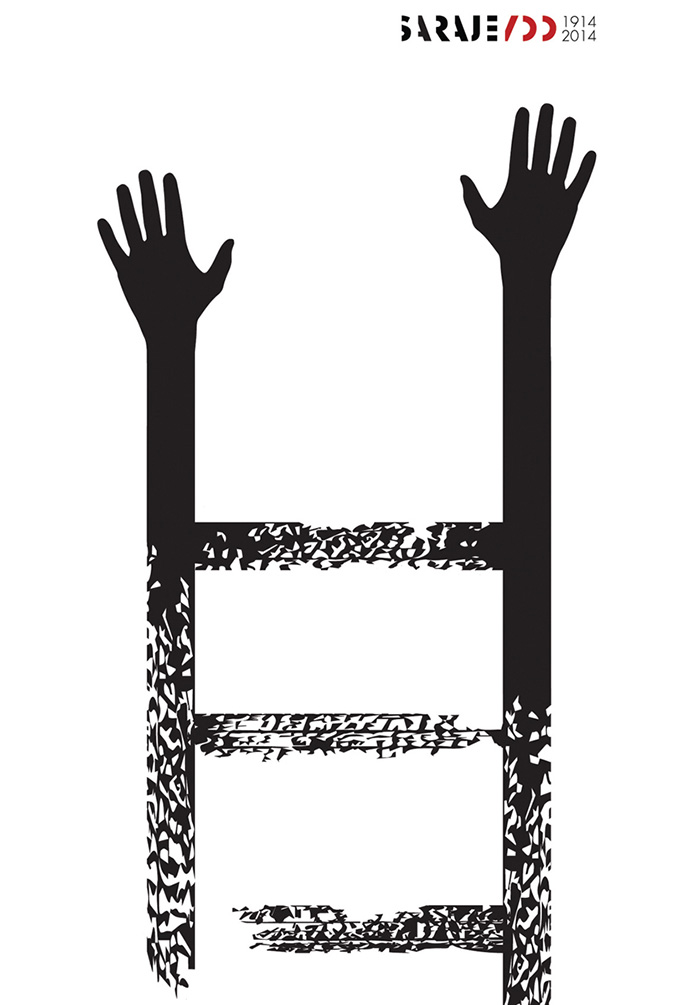Čedomir KOSTOVIĆ – educational activity and visual communication are more important than his personality
The international educational and designing career of Čedomir Kostović is a unique narrative, comparable to few other contemporary examples of an art educator and author-designer in any way related to the discourse in Bosnia and Herzegovina, and, in his case, particularly in Sarajevo.Indeed, it is well known that he began his educational activity as a teaching assistant of professor Mladen Kolobarić, and that somewhat later he also assistedprof. Stane Bernik, PhD, and worked as an assistant professor at the Academy of Fine Arts in Sarajevo until 1991.Invited as an Artist in Residence, he leaves Sarajevo and spends a year at the Old Dominion University in Norfolk, Virginia, and starting from the following academic year he has been teaching at the Department of Art and Design at Missouri State University, where he now holds the position of professor.
Following the change in social conditions of living and understanding and developing needs of the new environment, Kostović has also changed educational values of traditional forms and methods of teaching, though he has still maintained the possibility of further non-commercial experimenting, which allows him to work within the orientation of his own artistic activity. The subjective perception and activation of ‘new’ educational values are defined by the wealth of his personality, and by the focus of his free professional activity. Assimilating the found educational and professional values, which serve as a basis for a characteristic individual system of educational values, he has managed to make the goals of his own educational activity defined by particular motives which are suited to the needs it satisfies.
In this respect, it would be wrong to claim authorial achievements of the educator, or the designer, in the name of any environment, even the one he was shaped in. However, it is always possible to speak of the still visible trace he has left in Bosnia and the USA. As a designer, Kostović endowed Bosnia with essentially defined ‘traces’ of Bosnian and Herzegovinian, as well as Yugoslav visual culture of the 1980s. It is a fact that Kostović’s concept of visual communication, no matter how pretentious it was at times, was one of the phenomena which made Bosnia and ex-Yugoslavia an equal player in international trends in design. Besides, within his professional activity, which included creative graphic design in the cultural and social context, organization of international exhibition of posters, publishing critical essays and papers and holding lectures and workshops at various institutions, he contributed to value judgments and quality of the medium from American soil as well, at the very end of the 20th and the early 21st century.
However, on the ‘new soil’ he also encountered the idea of democratizing art, rejecting the modernist idea of ‘artist-genius’, highlighting the new position of the artist as a manufacturer, a proletarian, we would now say even as a construction worker. Of course, the articulation of these ideas in the ‘new environment’ was significantly influenced by Warhol (pop art), Burroughs (cut up), Fluxus (art as communication) all the way to Marshall McLuhan (global village), as well as Kraftwerk and Brian Eno. It is therefore even more interesting to be aware of the presence of his standards of creative activity he has never given up, which imply the designer’s ‘immersion’ in the content, manipulation with words and pictorial elements, i.e. their meanings and symbolic ties. Hierarchies and priorities are simply distinctive of any environment. In America, the natural environment is mostly the market of products, where it is very difficult to cash the aspect of one’s own creative activity. Kostović was obviously willing to pay this price by working on his own concept of visual messages in the cultural and general social context rather than on design based on anformulated order. It seems that Kostović ‘declined’ to adopt the reduction of his own activities under the denominator of ‘cultural and creative industries’, the aim and result of which are typically commercialization, i.e. imposing market criteria as primary. He certainly differs from his colleagues in America in many respects and such an orientation was not, so to say, applicable to him. He is an individual and likes things being ‘his way’, his authorial design often has a clear personal stamp, and is expressive in a way in which a large part of his entire designing work so far is.
As a designer of poster forms and long-play record covers (Valentino 1and 2, 1983/1985.), he was an active and completely equal participant on the both musical and theatrical stage of the time (Ptice /Birds/, 1980; 27. MESFestival, 1986; 20. Pozorišne igre BiH /20thTheatre Festival of BiH/,1990.; U ptice zaljubljen /In love with birds/, 1986, etc.). His poster forms suggestively and critically visually documented the cultural image of whole ex-Yugoslavia (Official poster of the XIV Winter Olympic Games in Sarajevo 1982), as well as certain characteristic issues of the existing phenomena/relations on the world scene (Okoliš /Environment/, 1986; Irak – zašto /Iraq – why/...? 1990; Domovina /Homeland/, 1992; Bratstvo i jedinstvo /Brotherhood and unity/, 1993; Bosna /Bosnia/, 1994; Rasizam /Rasism/& ..., 1996; Stop nasilju /Stop to violence/, 2001; AIDS – skrivena opasnost /AIDS – a hidden threat/, 2007; Sarajevski triptih /Sarajevo triptych/ 1, 2 and 3, 2013; T_Amerika /T. America/, 2017; Putin, 2022,etc.).
It would be almost impossible to list all the intriguing countries where Čedomir Kostović has exhibited his works; however, it should be noted that his works have left a profound trace on the cultural map of Sarajevo, Bosnia, as well as of Europe, America, the Middle East, Asia, China, Japan etc.., in terms of the pluralism of his worldview, heterogeneity of cultural references and prominent enriching of a distinctive culture of visual communication. It should also be noted that the part which was created in America appeared within an independent cultural scene and that he has remained original and independent as an author. The analysis of his activity up till now reveals that systematic and continuous designing of certain visual messages is a complex and problematic task and that, in general, Kostović’s ability to align very diverse contents and visual elements into a recognizable cultural entity is highly admired. His visual messages on posters depart from the common way of communicating such contents and encourage viewers to get involved into a semantic game of deciphering meanings of both theatre and civil activism.
Highly set standards of authorial activity are proven by many local and international awards, as well as by his representation in books, catalogues and journals which deal with contemporary graphic design, and works archived in prestigious collections throughout the world (San Francisco Museum of Modern Art, ‘On The Seam’ museum in Jerusalem, Art Gallery of Maryland University, Australian Sports Museum inMelbourne, etc.). These data confirm that his poster forms based on highly set standards are more important even than his personality.
Yours truly is deeply honored to have worked together with Čedomir Kostović as educators at the Academy of Fine Arts in Sarajevo and collaborated at some of his projects. It may sound pretentious, but we have always found it essential to exceed the expected and arouse a corresponding response, to try to open a window for a new perception, in brief – to move from the already ‘fixed place’.
Finally, by perusing Kostović’s design, younger colleagues may learn an important lesson: a professional can and must shape and communicate any content with high quality, but the greatest pleasure arises from working with ideas one deeply believes in.
Prof. Mehmed A. AKŠAMIJA, PhD, EASA/ASAE academician
Sarajevo, September 8, 2022
Creative Philosophy by Čedomir Kostović


